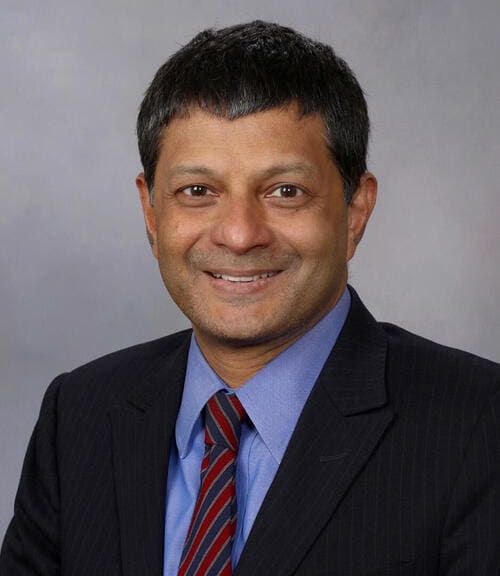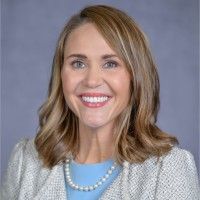Publication
Article
Evidence-Based Oncology
Navigating the Complexities of Cancer Care: Cannabis and Cost Considerations
Author(s):
Key Takeaways
- Cannabis legalization is increasing, necessitating oncologists' understanding of its use in symptom management for cancer patients.
- High cancer drug costs are driven by lack of price negotiation, pharma lobbying, and barriers to generics and biosimilars.
- Policy solutions include Medicare price negotiations, promoting generics, and reforming pharmacy benefit managers.
- The FDA's accelerated approval pathway faces criticism for inefficiencies, with calls for reform to ensure drug efficacy and cost-effectiveness.
Drug costs and cannabis took center stage at the Mayo Clinic Institute for Value-Based Medicine® event presented by The American Journal of Managed Care (AJMC). Event host Scott Soefje, PharmD, MBA, BCOP, FCCP, FHOPA, director of pharmacy cancer care services and assistant professor of pharmacy at Mayo Clinic, in Rochester, Minnesota, chose topics for this meeting that had a broad impact in health care but could be distilled down to specific oncology impacts.
“With the increasing legalization of cannabis products across the United States, we think it’s a very appropriate topic for cancer professionals to understand how cannabis is going to be used in these patients [with cancer],” he explained in an interview with AJMC ahead of the event.
Soefje was joined at the event by his colleagues at Mayo Clinic:
Scott Soefje, PharmD, MBA, BCOP, FCCP, FHOPA | Image: Mayo Clinic

- Clayton Irvine, PharmD, MBA, MS, senior manager of oncology cancer care
- Chelsee Jensen, PharmD, BCPS, senior pharmacy specialist and pharmaceutical formulary manager
- Marie Parish, PharmD, BCOP, gastrointestinal oncology pharmacist
- S. Vincent Rajkumar, MD, professor of medicine and consultant in the Division of Hematology and the Division of Hematopathology
In her job, Parish often hears from and of patients who feel “out of control” when it comes to their cancer care, and there has been growing interest in using cannabis to manage pain in patients with cancer. “I don’t think a day goes by where I don’t get asked a question by a patient or a provider about how we can incorporate cannabis into symptom management or [adverse] effect [AE] management from chemotherapy,” she said.
As the legal landscape of cannabis is changing, she said it’s important for everyone to have a baseline knowledge of cannabis use. In Minnesota, marijuana has been legalized for medicinal use since 2014, and the state legalized recreational use in 2023.1
When patients are looking to add a cannabis product to their care, they have to decide which strain they want. There are 3 different strains, Parish explained, and each has a different AE profile. “Based on the symptoms that the patients are trying to mitigate, one strain might be more appropriate than the other,” she said.
Cannabis sativa has a higher ratio of d-9-tetrahydrocannabinol (THC) to cannabidiol (CBD), providing more of a “high,” whereas cannabis indica has a higher CBD:THC ratio. The third strain, cannabis ruderalis, has a very low THC content and generally isn’t used often, either clinically or recreationally. However, hybrids are becoming increasingly popular, and they are grown with varying THC:CBD ratios and better meet the specific needs of the patient.
With sativa, patients will experience classic euphoric symptoms, more alertness, increased creativity, and increased energy. In comparison, indica is more sedating and relaxing and will increase a patient’s appetite, help them sleep, and assist with pain management. Parish said she usually recommends indica.
Marie Parish, PharmD, BCOP| Image: AJMC

CBD, importantly, does not have the same neurologic intoxication effects as THC, and a THC product coformulated with CBD will dampen the psychoactive effects without taking away the clinical benefit of THC, she said.
Once the strain is chosen, there are various products and delivery systems to choose from. “The drug delivery system can actually help manage certain [AEs], because there’s going to be different onsets of action [and]…different durations of action,” Parish said. “This is where the role of a pharmacist can shine.”
There are 3 FDA-approved synthetic cannabis-related products: nabilone and dronabinol, both for chemotherapy-induced nausea and vomiting (CINV). Dronabinol has also been used to treat low appetite among patients with AIDS. Outside of approved options, there are dry flowers that can be smoked or baked, as well as proprietary forms like liquid extracts, capsules, sublingual tablets, sprays, suppositories, and patches. “Any drug system that exists, we are trying to stick cannabis in it.”
Unfortunately, the data on use of cannabis products in patients with cancer remains weak, because designing well-powered, randomized controlled trials using a Schedule I controlled substance is difficult.
The 2 most commonly asked-about indications for cannabis are CINV and pain. A study from 2020 found that patients experiencing CINV despite guideline-consistent antiemetic prophylaxis had an improvement in complete response, with 25% of patients in the THC:CBD arm reporting a response vs 14% in the placebo group.2 A higher proportion of patients in the THC:CBD arm experienced AEs, as might be expected.
In contrast, there are a lot of unknowns around pain management, despite this being the symptom Parish gets asked about the most. There isn’t any information yet about which patients will benefit the most or the most appropriate way to deliver cannabis to provide maximum pain management.
The data that are out there suggest patients may find benefit in both inflammatory and neuropathic pain. In one study, 50.8% of patients reported a significant improvement in their pain at a 6-month follow-up visit, but 4% experienced no benefit.3 However, the important information to tell patients is that this benefit was in conjunction with opioids, and Parish ensures that they understand that. “I never discourage them from trying this, but I do try to let them know that this is likely not going to replace their current pain management,” she said. “This is only meant to be in addition to their existing pain management regimen.”
She also reviewed a few other considerations that providers and patients must be aware of when deciding whether to incorporate cannabis. For instance, response to immunotherapies may be lower in cannabis users, and Parish said it will be important to mention this to patients on chemotherapy who are adding immunotherapy. There is still a lack of data on drug-drug interactions.
In addition, cannabis is now in the National Comprehensive Cancer Network (NCCN) guidelines for adults with cancer pain and CINV; however, because of the limited data, the NCCN does not recommend it up front. The American Society of Clinical Oncology (ASCO) is “wishy-washy” on cannabis due to the lack of evidence. Parish said ASCO does not recommend it up front but acknowledges that if cannabis is legal in your state, it could be an option along with other methods to reduce pain.
Drug Costs and Cancer
S. Vincent Rajkumar, MD | Image: Mayo Clinic

Shifting the focus, Rajkumar talked about drug costs in general and why they are so high. He then joined a panel discussion on how these concepts are applied in cancer care.
“It’s an important topic because the cost of care is just skyrocketing everywhere, and cancer is probably one of the leading causes of increase,” Soefje said.
Rajkumar started with the patient story of Alec Smith, who had type 1 diabetes and turned 26 years old in 2016. He went off of his parents’ insurance on June 1 and tried to get insurance to cover his insulin, but the lowest plan he could find had a premium of $450 per month and a $6000 deductible, which he couldn’t afford. Instead, Smith rationed his insulin and, by June 27, he had died from diabetic ketoacidosis.4
After his parents did some research, they found that they were not alone; many parents had lost children to the same situation. Their advocacy resulted in the Alec Smith Insulin Affordability Act in Minnesota, which means anyone in the state can go to a pharmacy and, if they cannot afford their insulin, the pharmacy must give it to them for $35.5
In 2023, the Inflation Reduction Act (IRA) also reduced the price of insulin to $35, which takes care of seniors, too; now all 3 major insulin manufacturers reduced the price of insulin to $35 per month. “When I told this years ago, it was a hopeless story,” Rajkumar said. “If it can happen to insulin, what chance does oncology have?” But advocacy works, and Medicare policy works, he said.
In the oncology space, the median cost of new drugs is approaching $200,000 per year, Rajkumar said.6 In addition, not only are drug prices higher in the US, but the country also experiences price increases compared with other countries where the price of a drug only falls after launch and without any modifications. He provided the example of lenalidomide (Revlimid), which cost $215 for 1 pill in 2005 and has increased to more than $700 in 2020.7
In the diabetes and obesity space, he highlighted the price of glucagon-like peptide-1 receptor agonists, which can cost $1000 per month with insurance, which doesn’t always cover this treatment for obesity.
“We have good drugs,” Rajkumar said. “We can protect the public. But we cannot afford it [and] neither can the public, so something has to happen.”
He ran through the list of culprits for the high costs, including vulnerable populations willing to pay anything for a lifesaving drug, the lack of drug price negotiation, the influence of pharma lobbying, and the barriers to getting generics and biosimilars approved and adopted.
According to Rajkumar, there are some policies that can be enacted to assist with these prices:
- Medicare should be allowed to negotiate for lower prices at launch
- Generics and biosimilars should be given an easier entry into the market and policies to promote their adoption
- Pharmacy benefit manager reform can provide transparency on costs and rebates being passed to the customer
- The cost and time to develop drugs must be reduced
- Patent reforms that prevent a company from extending a drug’s patent repeatedly to last longer
However, Rajkumar said he didn’t want to be all gloom and doom; in part due to the IRA, there has been progress over the past 5 years:
- Medicare can start negotiating drug prices 7 to 11 years after launch
- Drug companies must pay rebates if drug prices increase faster than inflation
- There is a growth in nonprofit generic and biosimilar manufacturers
- A $2000 out-of-pocket cap on all Medicare Part D drugs takes effect January 1, 2025
- There has been a proliferation of cost-plus drugs and online pharmacies, which have significantly lower drug prices
Rajkumar also reminded clinicians that they have a role, too. They need to know what drugs actually cost and follow guidelines that take cost into effect for treatment decisions. Trials are evaluating the correct duration of therapy and whether some patients can stop treatment and save costs. “We are not willing to talk to patients about cost, [but] we need to as physicians,” he said.
Perils of the Accelerated Pathway
In the following panel discussion, Irvine and Jensen took the stage and continued the conversation of providers talking to patients about costs. Irvine noted that when clinicians are in the room with the patient, they
do not know what the medication will cost an individual.
On the topic of getting drugs to market faster, they addressed the FDA’s accelerated pathway. They also highlighted research that shows 22% of cancer drugs approved via the accelerated approval pathway between 2013 and 2017 were withdrawn from the market.8
Chelsee Jensen, PharmD, BCPS | Image: Mayo Clinic

“I really feel like the accelerated approval phase should be [like] we
are dating you as a drug,” Jensen said. She added that drugs should
only be allowed a certain price based on their quality-adjusted life
years until a confirmatory trial is completed, at which point there may
be a price increase.
“Think about the cost that has been spent by Medicare on a drug that is essentially not effective [or is] no more effective than what the standard of care is,” she said. “What a waste of money. What a waste of patient hope, and a huge price tag at that…. [It’s also a] huge disruption when you have to go back and take those patients off that drug.”
Irvine echoed the sentiment, adding that he believes there should be a penalty for companies that have to remove something from the market. Manufacturers, he said, should have to pay money back if they pull their drug. “I think we might see differences [in] how these things shake out,” he said.
References
1. Minnesota Issue Guide—cann.abis. Minnesota Legislative Reference Library. Reviewed May 2024. Accessed September 16, 2024. https://www.lrl.mn.gov/guides/guides?issue=cannabis
2. Grimison P, Mersiades A, Kirby A, et al. Oral THC:CBD cannabis extract for refractory chemotherapy-induced nausea and vomiting: a randomised, placebo-controlled, phase II crossover trial. Ann Oncol. 2020;31(11):1553-1560. doi:10.1016/j.annonc.2020.07.020
3. Bar-Lev Schleider L, Mechoulam R, Lederman V, et al. Prospective analysis of safety and efficacy of medical cannabis in large unselected population of patients with cancer. Eur J Intern Med. 2018:49:37-43. doi:10.1016/j.ejim.2018.01.023
4. Sable-Smith B. Insulin’s high cost leads to lethal rationing. NPR. September 1, 2018. Accessed September 23, 2024. https://www.npr.org/sections/health-shots/2018/09/01/641615877/insulins-high-cost-leads-to-lethal-rationing
5. Minnesota House passes Alec Smith Insulin Affordable Act. Minnesota House of Representatives. April 14, 2020. Accessed September 23, 2024. https://www.house.mn.gov/members/profile/news/15518/29389
6. Report by the office of Rep Katie Porter. Skyrocketing: how big pharma exploits launch prices to cash in on cancer. November 2, 2022. Accessed September 23, 2024.
7. Bennett CL, Gibbons JB, Trujillo A, et al. Congressional investigation of RevAssist-linked and general pricing strategies for lenalidomide. JCO Oncol Pract. 2024;20(8):1021-1026. doi:10.1200/OP.23.00579
8. Davenport L. Accelerated approval pathway for cancer drugs: does it work? Medscape. July 23, 2024. Accessed September 23, 2024. https://www.medscape.com/viewarticle/accelerated-approval-pathway-cancer-drugs-does-it-work-2024a1000djy

2 Commerce Drive
Suite 100
Cranbury, NJ 08512
© 2025 MJH Life Sciences® and AJMC®.
All rights reserved.





